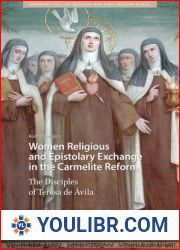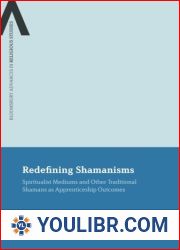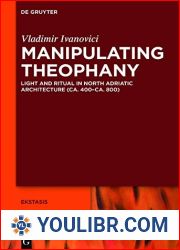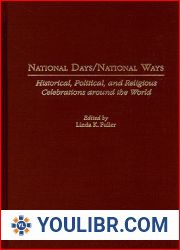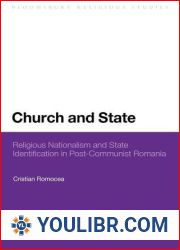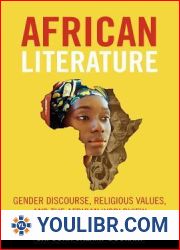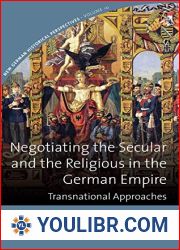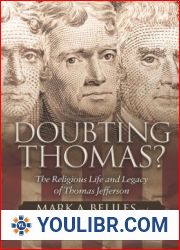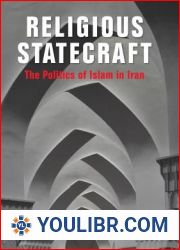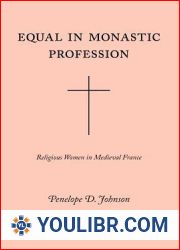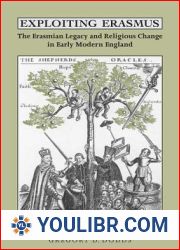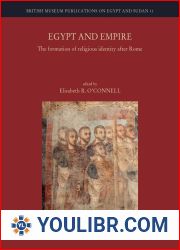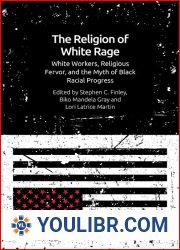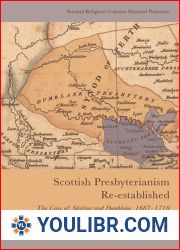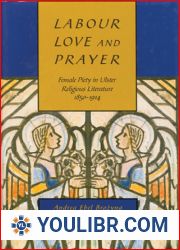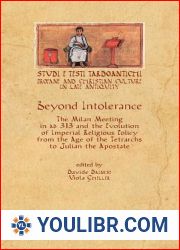
BOOKS - How the Secularization of Religious Houses Transformed the Libraries of Europ...

How the Secularization of Religious Houses Transformed the Libraries of Europe, 16th-19th Centuries
Author: Cristina Dondi
Year: 2022
Format: PDF
File size: PDF 12 MB
Language: French

Year: 2022
Format: PDF
File size: PDF 12 MB
Language: French

How the Secularization of Religious Houses Transformed the Libraries of Europe 16th-19th Centuries The closure of religious houses in varying circumstances affected all of Europe at some point between the sixteenth and nineteenth century, leaving behind a legacy of medieval and early modern collections that are still relevant today. This book explores the impact of secularization on the preservation and dispersal of these collections, and how it influenced the development of modern knowledge. The process of secularization had far-reaching consequences, both positive and negative, and its effects can be seen in different aspects of religious and political history. By focusing on books and libraries, we gain a deeper understanding of the cultural importance of these institutions and their continued relevance in shaping European heritage. In this collection of essays, experts from various countries and periods come together to share their experiences and insights into the evolution of libraries during this time period. From Portugal and Spain in the west to Poland and Ukraine in the east, and from Finland and Sweden in the north to Naples in the south, the volume presents a comprehensive overview of the impact of secularization on library holdings and attitudes towards erudition. While some territories have made significant progress in provenance research, others remain less explored. The editors hope that this publication will stimulate further investigation and bridge some of the gaps visible in the evidence presented herein. Multiple avenues for further study open up, including the influence of secularization on non-religious libraries and the shift in attitudes towards certain disciplines and erudition itself. The book begins by examining the closure of religious houses in the 16th century, which led to the dispersal of their collections and the loss of many valuable texts.
Как секуляризация религиозных домов преобразила библиотеки Европы XVI-XIX вв. Закрытие религиозных домов в различных обстоятельствах повлияло на всю Европу в какой-то момент между шестнадцатым и девятнадцатым веком, оставив после себя наследие средневековых и ранних современных коллекций, которые до сих пор актуальны. Эта книга исследует влияние секуляризации на сохранение и распространение этих коллекций, и как она повлияла на развитие современных знаний. Процесс секуляризации имел далеко идущие последствия, как положительные, так и отрицательные, и его последствия можно увидеть в разных аспектах религиозной и политической истории. Сосредоточившись на книгах и библиотеках, мы получаем более глубокое понимание культурной важности этих учреждений и их постоянной актуальности в формировании европейского наследия. В этом сборнике эссе эксперты из различных стран и периодов собираются вместе, чтобы поделиться своим опытом и пониманием эволюции библиотек в этот период времени. От Португалии и Испании на западе до Польши и Украины на востоке и от Финляндии и Швеции на севере до Неаполя на юге в томе представлен всеобъемлющий обзор влияния секуляризации на библиотечные фонды и отношение к эрудиции. В то время как некоторые территории добились значительного прогресса в исследованиях провенанса, другие остаются менее изученными. Редакция надеется, что эта публикация будет стимулировать дальнейшее расследование и устранит некоторые пробелы, видимые в представленных здесь доказательствах. Открываются многочисленные возможности для дальнейшего изучения, включая влияние секуляризации на нерелигиозные библиотеки и сдвиг в отношении к определенным дисциплинам и самой эрудиции. Книга начинается с рассмотрения закрытия религиозных домов в XVI веке, что привело к распылению их коллекций и потере многих ценных текстов.
Comment la laïcisation des maisons religieuses a transformé les bibliothèques d'Europe XVI-XIXe introduction La fermeture des maisons religieuses dans diverses circonstances a affecté toute l'Europe à un moment donné entre le XVIe et le XIXe siècle, laissant derrière elle l'héritage des collections médiévales et des premières collections modernes qui sont encore d'actualité. Ce livre explore l'impact de la laïcité sur la conservation et la diffusion de ces collections, et comment elle a influencé le développement des connaissances modernes. processus de laïcisation a eu des conséquences profondes, tant positives que négatives, et ses conséquences se retrouvent dans différents aspects de l'histoire religieuse et politique. En nous concentrant sur les livres et les bibliothèques, nous comprenons mieux l'importance culturelle de ces institutions et leur pertinence constante dans la formation du patrimoine européen. Dans ce recueil d'essais, des experts de différents pays et périodes se réunissent pour partager leurs expériences et comprendre l'évolution des bibliothèques au cours de cette période. Du Portugal et de l'Espagne à l'ouest à la Pologne et à l'Ukraine à l'est, et de la Finlande et de la Suède au nord à Naples au sud, le volume présente un aperçu complet de l'impact de la laïcité sur les fonds des bibliothèques et de l'attitude à l'égard de l'érudition. certains territoires ont fait des progrès considérables dans la recherche sur la Provence, d'autres restent moins étudiés. La rédaction espère que cette publication stimulera la poursuite de l'enquête et comblera certaines lacunes visibles dans les éléments de preuve présentés ici. Il y a de nombreuses possibilités d'étudier plus avant, y compris l'impact de la laïcité sur les bibliothèques non religieuses et le changement d'attitude vers certaines disciplines et l'érudition elle-même. livre commence par considérer la fermeture des maisons religieuses au XVIe siècle, ce qui a conduit à la pulvérisation de leurs collections et à la perte de nombreux textes précieux.
Cómo la secularización de las casas religiosas transformó las bibliotecas de en los siglos XVI y XIX. cierre de las casas religiosas en diversas circunstancias afectó a toda en algún momento entre los siglos XVI y XIX, dejando atrás un legado de colecciones medievales y tempranas modernas que aún son relevantes. Este libro explora la influencia de la secularización en la conservación y difusión de estas colecciones, y cómo ha influido en el desarrollo del conocimiento contemporáneo. proceso de secularización ha tenido consecuencias de largo alcance, tanto positivas como negativas, y sus efectos pueden verse en diferentes aspectos de la historia religiosa y política. Centrándonos en los libros y las bibliotecas, adquirimos una mayor comprensión de la importancia cultural de estas instituciones y de su constante relevancia en la formación del patrimonio europeo. En esta colección de ensayos, expertos de diversos países y periodos se reúnen para compartir sus experiencias y comprensión de la evolución de las bibliotecas en este periodo de tiempo. Desde Portugal y España en el oeste hasta Polonia y Ucrania en el este y desde Finlandia y Suecia en el norte hasta Nápoles en el sur, el volumen presenta una visión general completa del impacto de la secularización en los fondos de biblioteca y la relación con la erudición. Mientras que algunos territorios han hecho avances significativos en la investigación de la proveniencia, otros siguen siendo menos estudiados. La editorial espera que esta publicación estimule una mayor investigación y colme algunas de las lagunas que se ven en las pruebas aquí presentadas. Se abren numerosas posibilidades para un mayor estudio, incluyendo el impacto de la secularización en las bibliotecas no religiosas y un cambio de actitud hacia ciertas disciplinas y la propia erudición. libro comienza considerando el cierre de las casas religiosas en el siglo XVI, lo que llevó a la pulverización de sus colecciones y la pérdida de muchos textos valiosos.
Come la secolarizzazione delle case religiose ha trasformato le biblioteche europee XVI-XIX. La chiusura delle case religiose in diverse circostanze ha influenzato tutta l'a un certo punto tra il seicento e il diciannovesimo secolo, lasciando alle spalle l'eredità delle raccolte medievali e moderne che sono ancora attuali. Questo libro indaga gli effetti della secolarizzazione sulla conservazione e la diffusione di queste collezioni, e come ha influenzato lo sviluppo delle conoscenze moderne. Il processo di secolarizzazione ha avuto conseguenze di grande portata, sia positive che negative, e le sue conseguenze si possono vedere in diversi aspetti della storia religiosa e politica. Focalizzandoci sui libri e sulle biblioteche, abbiamo una maggiore comprensione dell'importanza culturale di queste istituzioni e della loro costante rilevanza nella formazione del patrimonio europeo. In questa raccolta di saggi, esperti provenienti da diversi paesi e periodi si riuniscono per condividere la loro esperienza e la comprensione dell'evoluzione delle biblioteche in questo periodo di tempo. Da Portogallo e Spagna a ovest alla Polonia e Ucraina a est e da Finlandia e Svezia a nord a Napoli a sud, il volume fornisce una panoramica completa dell'impatto della secolarizzazione sui fondi bibliotecari e sul rapporto con l'erudizione. Mentre alcuni territori hanno fatto progressi significativi nella ricerca sulla provenienza, altri restano meno studiati. La redazione spera che questa pubblicazione stimoli ulteriori indagini e risolva alcune lacune visibili nelle prove qui riportate. Ci sono molte possibilità di esplorare ulteriormente, tra cui l'impatto della secolarizzazione sulle biblioteche non religiose e il cambiamento di atteggiamento verso certe discipline e l'erudizione stessa. Il libro inizia con l'esame della chiusura delle case religiose nel XVI secolo, che ha portato alla spartizione delle loro collezioni e la perdita di molti testi preziosi.
Wie die Säkularisierung religiöser Häuser die Bibliotheken s des 16. und 19. Jahrhunderts transformierte Die Schließung religiöser Häuser unter verschiedenen Umständen beeinflusste irgendwann zwischen dem 16. und 19. Jahrhundert ganz und hinterließ ein Erbe mittelalterlicher und früher moderner Sammlungen, die immer noch relevant sind. Dieses Buch untersucht die Auswirkungen der Säkularisierung auf die Erhaltung und Verbreitung dieser Sammlungen und wie sie die Entwicklung des modernen Wissens beeinflusst hat. Der Prozess der Säkularisierung hatte weitreichende Folgen, sowohl positive als auch negative, und seine Auswirkungen können in verschiedenen Aspekten der religiösen und politischen Geschichte gesehen werden. Durch die Konzentration auf Bücher und Bibliotheken gewinnen wir ein tieferes Verständnis für die kulturelle Bedeutung dieser Institutionen und ihre anhaltende Relevanz für die Gestaltung des europäischen Erbes. In dieser Sammlung von Essays kommen Experten aus verschiedenen Ländern und Zeiträumen zusammen, um ihre Erfahrungen und Einblicke in die Entwicklung von Bibliotheken in diesem Zeitraum auszutauschen. Von Portugal und Spanien im Westen über Polen und die Ukraine im Osten und von Finnland und Schweden im Norden bis Neapel im Süden bietet der Band einen umfassenden Überblick über die Auswirkungen der Säkularisierung auf Bibliotheksbestände und Einstellungen zur Gelehrsamkeit. Während einige Gebiete erhebliche Fortschritte in der Provenienzforschung gemacht haben, bleiben andere weniger erforscht. Die Redaktion hofft, dass diese Veröffentlichung weitere Untersuchungen anregen und einige der Lücken schließen wird, die in den hier vorgelegten Beweisen sichtbar sind. Zahlreiche Möglichkeiten zur weiteren Untersuchung eröffnen sich, einschließlich der Auswirkungen der Säkularisierung auf nichtreligiöse Bibliotheken und der Verschiebung der Einstellung zu bestimmten Disziplinen und der Gelehrsamkeit selbst. Das Buch beginnt mit einer Betrachtung der Schließung religiöser Häuser im 16. Jahrhundert, die zur Zersplitterung ihrer Sammlungen und zum Verlust vieler wertvoller Texte führte.
''
Din evlerinin sekülerleşmesi 16-19. yüzyıllarda Avrupa kütüphanelerini nasıl dönüştürdü? Çeşitli durumlarda dini evlerin kapatılması, on altıncı ve on dokuzuncu yüzyıllar arasında bir noktada tüm Avrupa'yı etkiledi ve geride hala geçerli olan ortaçağ ve erken modern koleksiyonların mirasını bıraktı. Bu kitap, sekülerleşmenin bu koleksiyonların korunması ve yayılması üzerindeki etkisini ve modern bilginin gelişimini nasıl etkilediğini araştırıyor. Sekülerleşme sürecinin hem olumlu hem de olumsuz geniş kapsamlı etkileri olmuştur ve etkileri dini ve siyasi tarihin farklı yönlerinde görülebilir. Kitaplara ve kütüphanelere odaklanarak, bu kurumların kültürel önemi ve Avrupa mirasını şekillendirmedeki devam eden ilgileri hakkında daha derin bir anlayış kazanıyoruz. Bu denemeler koleksiyonunda, çeşitli ülkelerden ve dönemlerden uzmanlar, bu süre zarfında kütüphanelerin evrimi hakkındaki deneyimlerini ve görüşlerini paylaşmak için bir araya geliyor. Batıda Portekiz ve İspanya'dan doğuda Polonya ve Ukrayna'ya, kuzeyde Finlandiya ve İsveç'ten güneyde Napoli'ye kadar, bu cilt sekülerleşmenin kütüphane varlıkları ve bilgeliğe yönelik tutumlar üzerindeki etkisine kapsamlı bir genel bakış sunmaktadır. Bazı bölgeler provenans araştırmalarında önemli ilerleme kaydederken, diğerleri daha az anlaşılmaktadır. Editörler, bu yayının daha fazla araştırmayı teşvik edeceğini ve burada sunulan kanıtlarda görülen bazı boşlukları ele alacağını umuyor. Sekülerleşmenin dini olmayan kütüphaneler üzerindeki etkisi ve belirli disiplinlere ve bilginin kendisine yönelik tutumlarda bir değişim de dahil olmak üzere daha fazla çalışma için çok sayıda fırsat var. Kitap, 16. yüzyılda dini evlerin kapatılmasını göz önünde bulundurarak başlar, bu da koleksiyonlarının püskürtülmesine ve birçok değerli metnin kaybolmasına yol açar.
كيف حولت علمنة البيوت الدينية مكتبات أوروبا في القرنين السادس عشر والتاسع عشر. أثر إغلاق المنازل الدينية في ظروف مختلفة على أوروبا بأكملها في وقت ما بين القرنين السادس عشر والتاسع عشر، تاركًا وراءه إرثًا من مجموعات القرون الوسطى وأوائل العصر الحديث التي لا تزال ذات صلة. يستكشف هذا الكتاب تأثير العلمنة على الحفاظ على هذه المجموعات ونشرها، وكيف أثر على تطور المعرفة الحديثة. كان لعملية العلمنة آثار بعيدة المدى، إيجابية وسلبية على حد سواء، ويمكن رؤية آثارها في جوانب مختلفة من التاريخ الديني والسياسي. من خلال التركيز على الكتب والمكتبات، نكتسب فهمًا أعمق للأهمية الثقافية لهذه المؤسسات وأهميتها المستمرة في تشكيل التراث الأوروبي. في هذه المجموعة من المقالات، يجتمع خبراء من مختلف البلدان والفترات لتبادل تجاربهم ورؤاهم حول تطور المكتبات خلال هذه الفترة الزمنية. من البرتغال وإسبانيا في الغرب إلى بولندا وأوكرانيا في الشرق وفنلندا والسويد في الشمال إلى نابولي في الجنوب، يقدم المجلد نظرة عامة شاملة على تأثير العلمانية على حيازات المكتبات والمواقف تجاه سعة الاطلاع. في حين أحرزت بعض الأقاليم تقدمًا كبيرًا في أبحاث المصدر، لا يزال البعض الآخر أقل فهمًا. يأمل المحررون أن يشجع هذا المنشور على مزيد من التحقيق ومعالجة بعض الفجوات التي شوهدت في الأدلة المقدمة هنا. هناك العديد من الفرص لمزيد من الدراسة، بما في ذلك تأثير العلمنة على المكتبات غير الدينية والتحول في المواقف تجاه بعض التخصصات وسعة الاطلاع نفسها. يبدأ الكتاب بالنظر في إغلاق المنازل الدينية في القرن السادس عشر، مما أدى إلى رش مجموعاتها وفقدان العديد من النصوص القيمة.













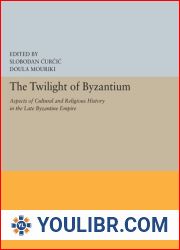

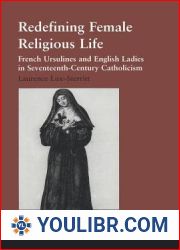
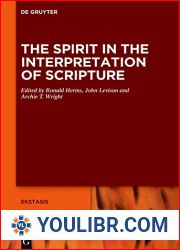

![The religious history of New England; King|s chapel lectures by John Winthrop Platner William W. Fenn [and others] 1917 [Leather Bound] The religious history of New England; King|s chapel lectures by John Winthrop Platner William W. Fenn [and others] 1917 [Leather Bound]](https://youlibr.com/img/5/542763_oc.jpg)
